-
 Bitcoin
Bitcoin $94,977.5839
0.25% -
 Ethereum
Ethereum $1,808.5000
-0.48% -
 Tether USDt
Tether USDt $1.0003
-0.02% -
 XRP
XRP $2.2506
-1.30% -
 BNB
BNB $604.3126
-0.93% -
 Solana
Solana $147.7957
-0.14% -
 USDC
USDC $1.0000
0.00% -
 Dogecoin
Dogecoin $0.1757
-2.18% -
 Cardano
Cardano $0.6996
-1.61% -
 TRON
TRON $0.2434
-1.63% -
 Sui
Sui $3.5932
1.35% -
 Chainlink
Chainlink $14.6405
-3.42% -
 Avalanche
Avalanche $21.7312
-1.96% -
 Stellar
Stellar $0.2798
-0.86% -
 UNUS SED LEO
UNUS SED LEO $9.0259
0.31% -
 Toncoin
Toncoin $3.2324
-1.30% -
 Hedera
Hedera $0.1875
-1.30% -
 Shiba Inu
Shiba Inu $0.0...01343
-2.47% -
 Bitcoin Cash
Bitcoin Cash $364.5955
-2.31% -
 Polkadot
Polkadot $4.1441
-4.08% -
 Litecoin
Litecoin $85.6139
-1.29% -
 Hyperliquid
Hyperliquid $18.4364
-1.36% -
 Dai
Dai $1.0000
-0.01% -
 Bitget Token
Bitget Token $4.3912
-0.86% -
 Monero
Monero $275.5743
1.90% -
 Ethena USDe
Ethena USDe $0.9995
-0.01% -
 Pi
Pi $0.5838
-3.42% -
 Pepe
Pepe $0.0...08919
-0.13% -
 Uniswap
Uniswap $5.3422
-2.47% -
 Aptos
Aptos $5.4131
-2.85%
How to secure Web3 wallet?
Implement two-factor authentication (2FA) for enhanced wallet security to prevent unauthorized access and protect your cryptocurrency assets from theft.
Dec 19, 2024 at 06:33 am
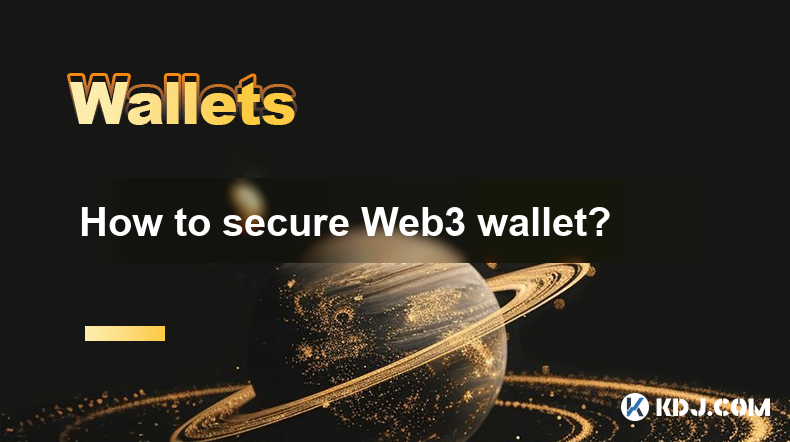
Key Points:
Implement Strong Security Measures:
- Create and maintain unique, complex passwords and two-factor authentication (2FA) using an authenticator app or hardware security key.
- Avoid connecting your wallet to untrusted websites or DApps (decentralized applications), and be vigilant about phishing scams.
Protect Your Private Keys:
- Store your private keys offline in a secure location, such as a hardware wallet or a password manager with strong encryption.
- Avoid storing your private keys on your computer, mobile device, or any other connected device that could be compromised.
Use Multi-Factor Authentication:
- Enable 2FA or multi-factor authentication (MFA) on your wallet to add an additional layer of protection beyond your password.
- Consider using a biometric authentication method, such as fingerprint or facial recognition, to further enhance security.
Keep Your Software Updated:
- Regularly update your wallet software and any associated browser extensions to patch security vulnerabilities and improve overall protection.
- By staying up-to-date, you reduce the risk of your wallet being exploited by known vulnerabilities.
Minimize Exposure to Scams:
- Be aware of common scams and phishing attempts, such as fake websites, emails, and social media messages.
- Never share your private keys or seed phrases with anyone, and carefully verify the authenticity of any websites or DApps before interacting with them.
Detailed Steps:
Implement Strong Security Measures
Create Strong Passwords:
- Use a unique and complex password for your wallet that is not easily guessable. Avoid using personal information, dictionary words, or common sequences.
- Consider using a password manager to generate and securely store your passwords.
Enable Two-Factor Authentication (2FA):
- Set up 2FA using an authenticator app or a hardware security key to add an additional layer of protection to your wallet.
- When you log in to your wallet, you will be prompted to enter the code generated by your authenticator app or insert your hardware key to complete the login process.
Avoid Untrusted Websites and DApps:
- Only connect your wallet to reputable websites and DApps that you trust.
- Be cautious of phishing scams that may attempt to trick you into connecting your wallet to malicious websites or DApps.
Stay Vigitant About Phishing Scams:
- Be wary of emails, text messages, or social media messages that appear to be from official sources but are actually phishing attempts to steal your private keys.
- Never click on links or attachments in suspicious messages, and carefully verify the authenticity of any communication before responding.
Protect Your Private Keys
Store Private Keys Offline:
- Do not store your private keys on your computer, mobile device, or any other connected device that could be compromised.
- Instead, store your private keys offline in a secure hardware wallet or on a paper wallet encrypted with a strong password.
Use a Hardware Wallet:
- A hardware wallet is a physical device that securely stores your private keys offline and provides additional protection against theft or compromise.
- When you want to use your funds, you can connect the hardware wallet to your computer or mobile device and approve the transaction using its built-in buttons or display.
Encrypt Your Private Keys:
- If you are storing your private keys on a computer or other device, use strong encryption to protect them from unauthorized access.
- Consider using a password manager with AES-256 encryption or a dedicated software encryption tool to encrypt your private key file.
Use Multi-Factor Authentication
Enable 2FA or MFA:
- Most major Web3 wallets offer 2FA or multi-factor authentication (MFA) as an additional security measure.
- 2FA typically involves using an authenticator app or hardware security key to provide a one-time code when logging in or making transactions.
Consider Biometric Authentication:
- Some Web3 wallets support biometric authentication methods, such as fingerprint or facial recognition, for added convenience and security.
- When using biometric authentication, your biometric data (such as your fingerprint) is used to verify your identity instead of a password or PIN.
Keep Your Software Updated
Regularly Update Wallet Software:
- Software updates often include security enhancements and bug fixes, so it is essential to regularly update your Web3 wallet software.
- Check for updates periodically and install them as soon as they become available.
Update Browser Extensions:
- If you use a browser extension to interact with your Web3 wallet, it is also important to keep the extension updated to the latest version.
- Browser extension updates may include security fixes and compatibility improvements.
Minimize Exposure to Scams
Be Aware of Common Scams:
- Familiarize yourself with common Web3 scams, such as phishing attacks, rug pulls, and fake airdrops.
- Be skeptical of any unsolicited messages, emails, or social media posts that promise unrealistic returns or require you to share your private keys.
Never Share Your Private Keys:
- Your private keys are the keys to your crypto assets.
- Never share your private keys with anyone, even if they claim to be from a support team or a legitimate project.
Verify Website and DApp Authenticity:
- Before connecting your wallet to any website or DApp, verify that it is legitimate and trustworthy.
- Check the website's URL for any irregularities
Disclaimer:info@kdj.com
The information provided is not trading advice. kdj.com does not assume any responsibility for any investments made based on the information provided in this article. Cryptocurrencies are highly volatile and it is highly recommended that you invest with caution after thorough research!
If you believe that the content used on this website infringes your copyright, please contact us immediately (info@kdj.com) and we will delete it promptly.
- Trump Media Launches 'Truth+' With a 'Utility Token' That May Be a Cryptocurrency
- 2025-04-30 14:05:13
- Monero (XMR) Explodes 30%, Setting a New High After Being Silent for a Long Time
- 2025-04-30 14:05:13
- BRICS Is Ditching the US Dollar Fast
- 2025-04-30 14:00:21
- Trump Media & Technology Group Corp. Is Exploring the Possibility of Launching a Utility Token and Digital Wallet
- 2025-04-30 14:00:21
- Bitcoin Remains at the Forefront of the Digital Asset Revolution
- 2025-04-30 13:55:13
- The Green Crypto Revolution: A New Era of Sustainable Digital Currencies
- 2025-04-30 13:55:13
Related knowledge
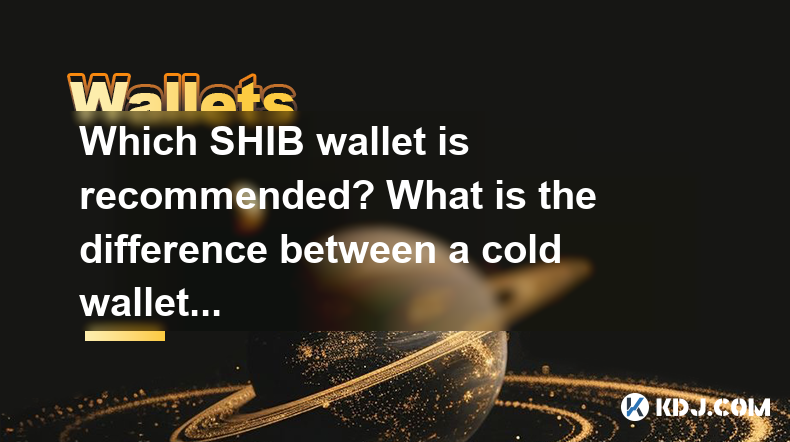
Which SHIB wallet is recommended? What is the difference between a cold wallet and a hot wallet?
Apr 29,2025 at 07:42pm
When it comes to storing your Shiba Inu (SHIB) tokens, choosing the right wallet is crucial for the security and management of your digital assets. In the cryptocurrency world, wallets are categorized into two main types: cold wallets and hot wallets. This article will explore the recommended SHIB wallets and delve into the differences between cold and ...

How to store AVAX safely after purchase? Which is better, cold wallet or hot wallet?
Apr 28,2025 at 09:28pm
When you purchase AVAX, the native cryptocurrency of the Avalanche network, ensuring its safe storage is crucial. The choice between a cold wallet and a hot wallet depends on your specific needs, such as security, convenience, and frequency of transactions. In this article, we will explore both options in detail, helping you make an informed decision on...

What to do if LINK wallet transfer fails? FAQ
Apr 29,2025 at 06:08pm
If you encounter a LINK wallet transfer failure, it can be a frustrating experience. However, there are several steps you can take to diagnose and resolve the issue. LINK, or Chainlink, is a decentralized oracle network that provides real-world data to smart contracts on the blockchain. Ensuring that your LINK transfers go smoothly is crucial for partic...
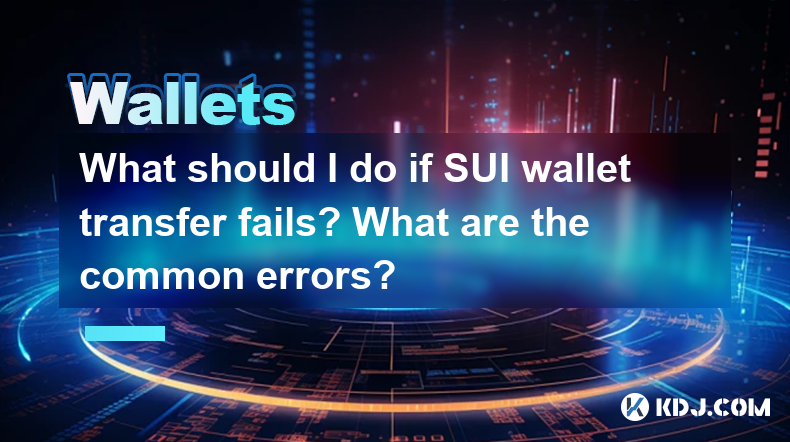
What should I do if SUI wallet transfer fails? What are the common errors?
Apr 29,2025 at 01:14am
If you are experiencing issues with SUI wallet transfers, it can be frustrating and confusing. This article will guide you through the common errors that may occur during a SUI wallet transfer and provide detailed steps on how to troubleshoot and resolve these issues. Understanding Common SUI Wallet Transfer ErrorsSUI wallet transfer failures can stem f...
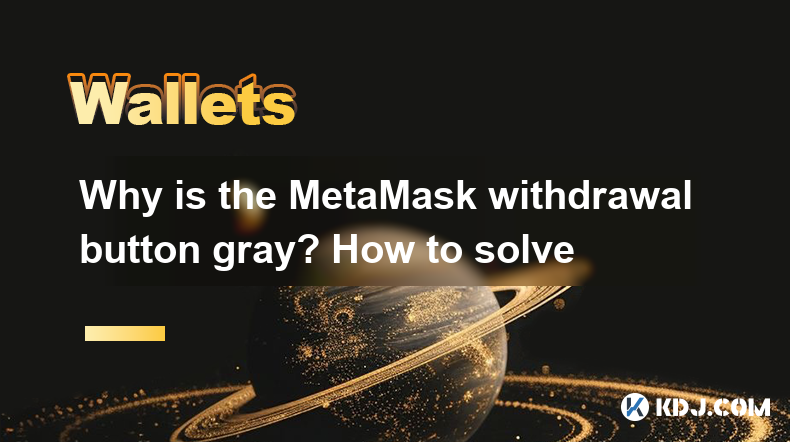
Why is the MetaMask withdrawal button gray? How to solve
Apr 28,2025 at 10:07am
When users encounter a grayed-out withdrawal button on MetaMask, it can be a source of frustration and confusion. Understanding why this happens and how to solve it is crucial for smooth transactions. The grayed-out withdrawal button typically indicates that certain conditions are not met, preventing the user from proceeding with a withdrawal. This arti...
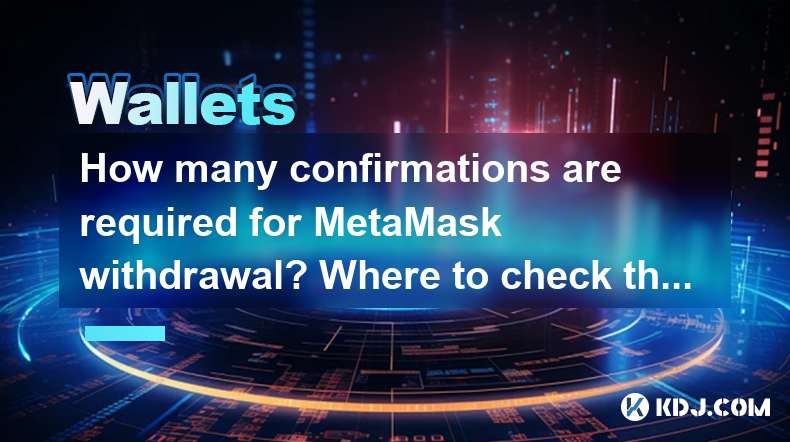
How many confirmations are required for MetaMask withdrawal? Where to check the progress
Apr 28,2025 at 05:49am
When using MetaMask to withdraw cryptocurrency, understanding the number of confirmations required and how to check the progress of your transactions is crucial for a smooth experience. Confirmations refer to the number of blocks added to the blockchain after the block containing your transaction, which helps to verify and secure the transaction. This a...

Which SHIB wallet is recommended? What is the difference between a cold wallet and a hot wallet?
Apr 29,2025 at 07:42pm
When it comes to storing your Shiba Inu (SHIB) tokens, choosing the right wallet is crucial for the security and management of your digital assets. In the cryptocurrency world, wallets are categorized into two main types: cold wallets and hot wallets. This article will explore the recommended SHIB wallets and delve into the differences between cold and ...

How to store AVAX safely after purchase? Which is better, cold wallet or hot wallet?
Apr 28,2025 at 09:28pm
When you purchase AVAX, the native cryptocurrency of the Avalanche network, ensuring its safe storage is crucial. The choice between a cold wallet and a hot wallet depends on your specific needs, such as security, convenience, and frequency of transactions. In this article, we will explore both options in detail, helping you make an informed decision on...

What to do if LINK wallet transfer fails? FAQ
Apr 29,2025 at 06:08pm
If you encounter a LINK wallet transfer failure, it can be a frustrating experience. However, there are several steps you can take to diagnose and resolve the issue. LINK, or Chainlink, is a decentralized oracle network that provides real-world data to smart contracts on the blockchain. Ensuring that your LINK transfers go smoothly is crucial for partic...

What should I do if SUI wallet transfer fails? What are the common errors?
Apr 29,2025 at 01:14am
If you are experiencing issues with SUI wallet transfers, it can be frustrating and confusing. This article will guide you through the common errors that may occur during a SUI wallet transfer and provide detailed steps on how to troubleshoot and resolve these issues. Understanding Common SUI Wallet Transfer ErrorsSUI wallet transfer failures can stem f...

Why is the MetaMask withdrawal button gray? How to solve
Apr 28,2025 at 10:07am
When users encounter a grayed-out withdrawal button on MetaMask, it can be a source of frustration and confusion. Understanding why this happens and how to solve it is crucial for smooth transactions. The grayed-out withdrawal button typically indicates that certain conditions are not met, preventing the user from proceeding with a withdrawal. This arti...

How many confirmations are required for MetaMask withdrawal? Where to check the progress
Apr 28,2025 at 05:49am
When using MetaMask to withdraw cryptocurrency, understanding the number of confirmations required and how to check the progress of your transactions is crucial for a smooth experience. Confirmations refer to the number of blocks added to the blockchain after the block containing your transaction, which helps to verify and secure the transaction. This a...
See all articles






















![Bowsers Castle by: YraX 100% (1 coin) (Mobile) Geometry Dash [2.2] Bowsers Castle by: YraX 100% (1 coin) (Mobile) Geometry Dash [2.2]](/uploads/2025/04/30/cryptocurrencies-news/videos/bowsers-castle-yrax-coin-mobile-geometry-dash/image-1.webp)































































